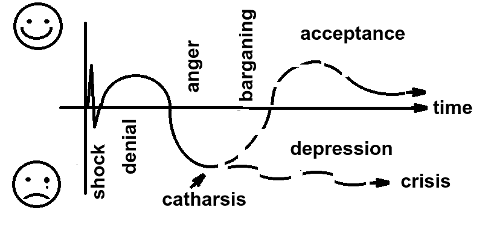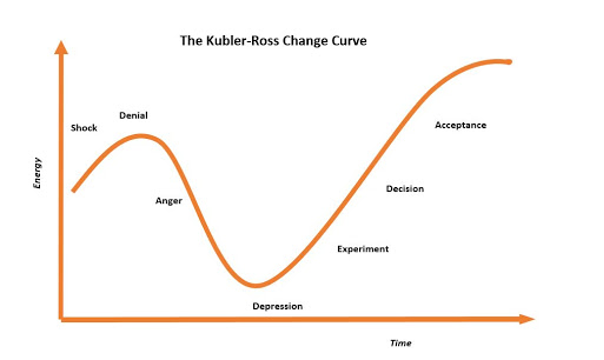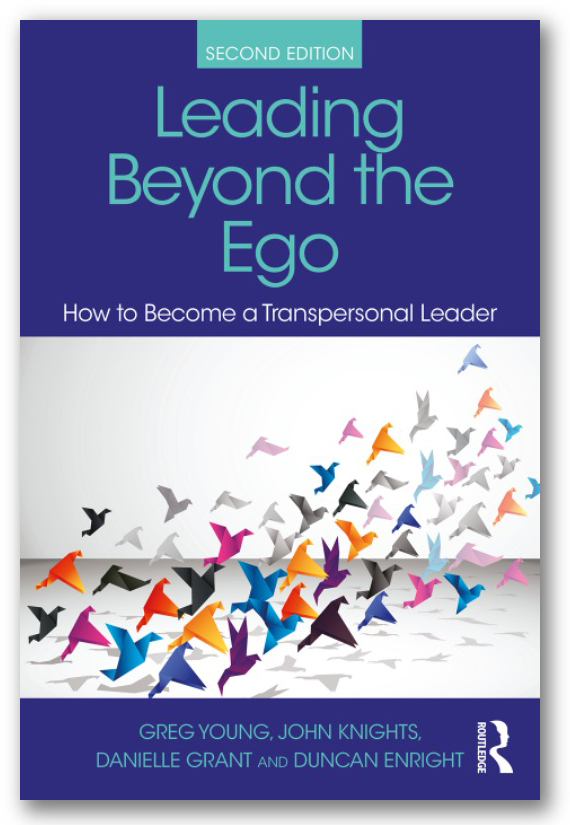Written by George Perry, July 2021
In one of our most recent Leadership Comes Alive podcasts from June, Greg Young talks to us about Transforming Organisations the Right Way.
He is asked what the reasons for reorganising organisations are, and goes onto tell us that, in short, it is the COVID-19 pandemic which has caused the greatest need for organisations to go through some kind of reorganisation process these past 15 months.
Some organisations would’ve been ahead of the game when it came to coping with the changes that COVID brought us; some were able to adapt quickly, whilst others needed a little more time to think about the changes that need to be put in place. Managing these changes is exactly what Greg talks about in the podcast.
Disruptors
 Previous disruptors of the 21st century that had been top of the agenda some 18-24 months ago would’ve included the integration of artificial intelligence (AI) and machine learning, and further digitisation.
Previous disruptors of the 21st century that had been top of the agenda some 18-24 months ago would’ve included the integration of artificial intelligence (AI) and machine learning, and further digitisation.
Moving beyond technological advancements, a socio-cultural aspect that needed addressing was addressing diversity, including managing multi-generational workplaces, as people need to and choose to work for longer, retire later, and so the gap between the youngest and eldest in organisations was getting wider, and needed some attention.
Another great disruptor was the shift towards carbon neutrality, including using renewable energy. This is brought about by societal pressure, being ethical, and now the technology is available that allows companies to make this shift that is gradually becoming a legal responsibility in all areas of business.
A Shock to the System
Then COVID struck, and it has proven the biggest disruptor by far. Many organisations were forced to make rapid transformations in order to adapt and remain efficient, and others chose to take this disruption to their modus operandi as an opportunity to make changes, that either they had in the pipeline for a while and been slow to act on (for whatever reason), or perhaps it was the urgent need for rapid response brought about the pandemic that made businesses rethink whole strategies, even if they were not forced into it, per se.
Some anecdotal evidence from industry experts estimates that changes in business practices that would have been implemented over the course of the next 5-10 were suddenly adopted in a matter of months. Many of the elements were about enhancement in technologies that were not properly tested out but needed to be put in place irrespective, as the alternatives were either impractical, sub-standard, or non-existent.
So, this means that when it came to making the great shift due to pandemic, businesses chose to take the risk they would otherwise have been less progressive about, or certainly slower to act on.
Managing Responses
With technological advancements, it is not just the technical aspects we must get used to, but also what the knock on effects are for society. And this, typically, has caused delays for many new technologies to reach mass adoption as we need time to simply accept the idea. Most of the new tech does usually reach us, it just takes a bit longer than it could, whilst we deal with the human emotional reaction to change; hence, the expectation of a long wait for big changes.
The speed and rapidity with which the COVID pandemic struck did not allow for the usual adjustment period, and new things, new ways of working and vast transformations were thrust upon us. The Israeli historian and anthropologist Yuval Noah Harari spoke about this in an article that he published early on in the first wave of lockdowns last year, as well as offering his predictions for the world after coronavirus.
From Then to Now
Looking back on it now, it is fascinating to see which of his predictions came out on top, and which fell by the wayside; mind you, his predictions were for the world after coronavirus, and we’re not out of the woods yet. So, there is still time for many of the things he predicted to come true.
Back then, (only last year!) it was a field day for any aspiring academic to write out their predictions for the world after the ‘great reset’; and indeed, any aspiring blogger felt obliged to throw their hat into the ring too. Some of these predictions were full of optimism, whilst others were all doom and gloom – the old glass half empty/half full conundrum.
It would be interesting to look back on all those articles and their predictions – which certainly provided riveting lockdown reading at a time of great uncertainty. Reviewing this with all that we know now and since then, and see what our perception is on the pundits’ view of things to come, with the added benefit of hindsight.
What We Know Now
We certainly know more about the unfolding of the pandemic than we did back then, and a lot of it has been about adjustment, getting used to it, and quickly. In many ways, the world sped up, even though the nature of the pandemic and lockdowns felt like things had reached a standstill.
In his podcast, Greg goes onto say that transformation for organisations is about the difference in form and function from how it was, to how it will be. Due to its very nature, this means that transformation is going to involve all manner of upset and change – it is a disruptive process.
The act of transformation means that an organisation needs to start doing new things, and stop doing old things. This will inevitably cause some consternation amongst those who are at the heart of the change process. As mentioned above, often changes will come at a pace that allows people to simply get used to the idea, rather than at the speed they could have actually been implemented – but perhaps with less success.
What is Transformation?
 Transformation is usually complicated and complex, not a simple swap of one thing to another. As such, it is a form of change, and this means it involves uncertainty for people, which brings anxiety. That natural response for humans is that the unknown always appears to be threatening. Whether this could be a primeval survival technique or not, we certainly have evidence that people like their ‘comfort zones’.
Transformation is usually complicated and complex, not a simple swap of one thing to another. As such, it is a form of change, and this means it involves uncertainty for people, which brings anxiety. That natural response for humans is that the unknown always appears to be threatening. Whether this could be a primeval survival technique or not, we certainly have evidence that people like their ‘comfort zones’.
From a neuroscience perspective, any uncertainty that is associated with change gives rise to anxiety, which is a negative emotion. Anything negative affects the productivity and running of an organisation – unless the process is led properly.
For Greg, this means adhering to these two main overarching principles:
- Transparency and clarity of the plan – As leaders conducting the change, they must clearly show what the organisation is currently like, and also show what it must become. This must appeal to people not just through logic, but also emotion.
Transformation itself is an emotional process, and whilst it is often considered to be a rational process of stepping from one place to another, and all the process involved in that, the irrational side of it – dealing with all the negative emotions – should not be ignored; and this leads to the next principle.
- Listening to the concerns and managing emotions – when people go through the transformation process, they experience the Kubler-Ross change curve. People go through it at a different rate, some can get stuck at certain points for longer than others, and some people will even travel backwards along it – but ultimately everyone must go forward and end up at the final stage, to experience the resolution.
Therefore, as a manager guiding people through the transformation process, alongside the technical aspects and change to procedures, they must carry their emotions through the process.
The Change Curve
When looking at the Kubler-Ross Change Curve that many of us will have heard of, what is fascinating is that it was actually developed by a psychiatrist looking at how people deal with grief. In other words, the model was created to explain the thought process for people experiencing a huge life-event whereby they lose a loved one they will never see again, due to bereavement. It has also been applied to relationship break-ups which has a very similar effect for people, as they will never see their partner again (and the entity of the relationship that was, is no more, too). That is what grieving is about, but could that really be applied to business transformations?
 Perhaps unsurprisingly, it can, as there are many similarities, and as a business leader this is something to be aware of. In a quick comparison with the Kubler-Ross model applied to grief vs transformation, it becomes apparent what those similarities are. In the original model, Kubler-Ross identified five stages of grief: Denial, Anger, Bargaining, Depression, and Acceptance.
Perhaps unsurprisingly, it can, as there are many similarities, and as a business leader this is something to be aware of. In a quick comparison with the Kubler-Ross model applied to grief vs transformation, it becomes apparent what those similarities are. In the original model, Kubler-Ross identified five stages of grief: Denial, Anger, Bargaining, Depression, and Acceptance.
This is all along a linear scale, with the idea that a person is initially shocked by the even making them unhappy, then the denial phase puts them into a happy frame of mind (because they’re ignoring the process), which is then, followed by anger, which is essentially an uncontrollable emotion that all humans will face when they’ve lost someone or something that is important to them.
What happens next is a bargaining phase, whereby the person essentially tries to justify their loss by making logical pleas in their own minds that will make things acceptable. The next part is curious, because people will dive into depression, or despair (as it finally dawns upon them what they’ve lost, and there is no way to regain it), but what’s crucial is how they cope with it, to lead to the next phase.
The final phase is acceptance, and if a person has managed their emotions well during the previous four stages of grief (denial, anger, bargaining, depression) then they will move into catharsis and accept the change, and then their mental-state and happiness improves, and eventually returns to ‘normal’. This is a dangerous turning point though, as if the person is not able to move onto the acceptance phase, this then leads to breakdown and crisis, as essentially the person is stuck in depression and negative emotions.
Adapting the Model
Kübler-Ross co-authored this with David Kessler and they expanded the model to include other forms of loss, such as the loss of a job or income, major rejection, drug addiction, incarceration, the onset of a disease or an infertility diagnosis; and even can be applied minor losses, such as a loss of insurance coverage.
So, can a personal loss such as those described be truly comparable to a business transformation? Yes, as you can see, it can in several ways.
When applied to a business transformation the journey starts at the same place, and also needs to end up at the same place for the people involved. The initial shock must always end up with that acceptance – and the journey there is much the same, as it would seem.
 The first stage would be denial, similar to what we’ve seen, and this lifts the person’s emotional state as they as essentially just ignoring the change, as this is apparently a natural reaction to guard ourselves against negative emotions. Then, they moved into frustration, which results in anger as they realise they are powerless to stop the change that has been forced onto them.
The first stage would be denial, similar to what we’ve seen, and this lifts the person’s emotional state as they as essentially just ignoring the change, as this is apparently a natural reaction to guard ourselves against negative emotions. Then, they moved into frustration, which results in anger as they realise they are powerless to stop the change that has been forced onto them.
Next, they’ll start to experiment, toy with the idea, which is much the same as the bargaining phase, and then they’ll start to feel more positive as they learn how to work in the new situation, and finally, they will integrate with the changes leading to a renewed individual.
If leaders are to instigate and manage change and transformation well, they must understand the emotions involved and also be willing to manage these.
Making Organisations Future Fit
At the end of the podcast, Greg Young leaves us with his three top tips for transforming organisations to make them future fit:
- Clarity – Make the need for the transformation and what it will look like very clear to everyone. This needs to be done not only on a logical basis, but also on an emotional basis too.
- Listen! – The best ideas will often come from people working in the front line, so if you're listening then you'll be able to come up with suitable solutions to obstacles that may threaten to derail the transformation process.
It is often the young frontliners who will have the best ideas to overcome obstacles, and you can only get that feedback if you listen to them.
Then, also listen to see if your messages are coming back to you, as this is a good way to tell if the transition is really working, because in this way it means that you're hearing the echo of your own words coming back at you. - Provide your leaders with the headspace to lead the transformation – Make sure they realise the importance that emotional intelligence has for the transformation process.

